- Shine Inaugural Technical Workshop
On 1 July 2022, Singapore Hybrid-Integrated Next Generation μ-Electronics (SHINE) centre continued its second day of launch series with an Inaugural Technical Workshop. This workshop was open to SHINE research community and consortium members only.
The principal investigators and co-investigator of the four research thrusts under SHINE centre were presenters of the day. They were Prof Chen Xiaodong, Prof Lee Pooi See, Prof Antonio Helio Castro Neto, Prof Ahmed Busnaina, Prof Qiu Cheng Wei, Prof Lim Yeow Kheng, Dr Vincent Leong, Dr Lim Teck Guan, Dr Evgeny Zamburg, Prof Koen Mouthaan, and Prof Massimo Alioto. The presenters shared the one-year milestone of their research activities, challenges and technical progression in SHINE.
Prof Lim Yeow Kheng, program director of SHINE, kicked off the day-2 workshop with his sharing of program revies and highlights. SHINE’s Light House Project is a Smart Surface Aware Remote Sensing Skin. The project is divided among 4 Thrusts with the final goal to produce a design platform, material, system design, and integration technique to be extended to various technology disruptors. The centre also emphasizes on Public-Private-Gov Research Partnership and aims to bridge the gap between academia and industry, for example, a Master of Science programme is being planned to address the talent demand/training by industrial partners.
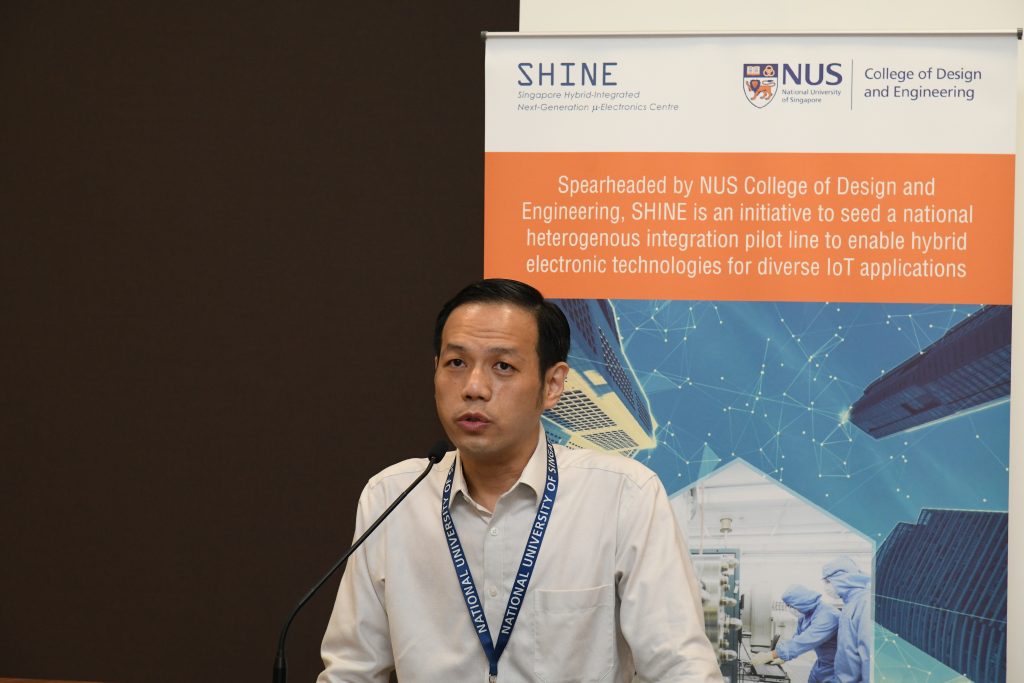
Professor Chen Xiaodong, deputy director of SHINE centre shared his vision on lab-to-fab translation of material manufacturing. Using flexible electronics as an example, Prof Chen identified key challenges in materials manufacturing from research stage to mass production stage and put forth the stages in product manufacturing: design, materials supply, processing, and integration. To overcome these obstacles, standardization, iteration between basic and applied research, and adoption of smart manufacturing must be in place at various development stages. He hoped that with concerted efforts from SHINE centre and academia, developing technologies would be able to cross the “valley of death” in the transition from low to high Technological Readiness Level.
Prof Lee Pooi See shared her team’s effort on the design and preparation of low interfacial thermal resistive materials through surface modification. Insulative, soft, and stretchable thermal resistive materials have been prepared using liquid metal particles and elastomer. The dielectric nanocomposites can be screen-printed and achieved good thermal conductivity. This dielectric nanocomposite ink is important for high frequency antennas, high speed microprocessors as well as thermal interface materials..

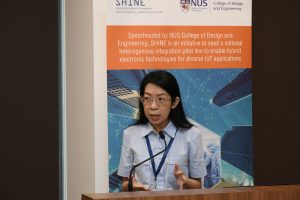
Prof Antonio Helio Castro Neto is the founder and Director of NUS Centre for Advanced 2D Materials (CA2DM) and Co-Director of NUS institute for Functional Intelligent Materials. He expressed his wishes to combine the efforts of CA2DM and SHINE centres to provide innovative solutions through technological breakthroughs. Afterwards, he explained the need for materials with high thermal conductivity, anisotropic thermal conduction, high material processability, and low bending rigidity. Then, he proposed a new type of 2D carbon film to address these stringent demands.
Prof Qiu Cheng Wei is well-known for his works metasurfaces and optical manipulation. Most artificial thermal conductivities can be effectively reached by mixing/doping different naturally-occurring thermal materials of different filling fractions. As a result, natural material and metamaterial only possess specific thermal conductivity as discrete ‘digital’ values and fixed dissipative processes. In his work, Prof Qiu aims to realize tunability of effective conductivity through dynamic strategy possessing a single-spinning fluid layer and out-of-plane thermal transport channel as additional freedom to create ultra-conductive thermal metamaterials. Through these works, Prof Chen hopes to create a new avenue of studying intelligent thermal management with dynamic and passive systems.
Prof Lim Yeow Kheng presented his approach in thermal management utilizing effective heat dissipation through the use of nanomaterials and nanostructures. First, he proposed the principle of heat dissipation under various thermal environment. Second, he introduced the nanomaterial and nanostructure as well as additive manufacturing approach in his works. Also, evaluation of heat dissipation on SHINE Light House Project was presented. Various cooling scenarios were considered and a combination of thermal spreader/storage and radiator was considered a workable solution from the Thrust.
Dr Vincent Leong, director of the RF program in DSO National Laboratories, Singapore, kicked off the afternoon workshop with his talk on Design of RF Transceiver on Chiplet-based Heterogeneous Integration Platform. His research and development work involve the design, modelling and characterization of MMIC/solid state power amplifiers, high dynamic range RF receivers, and novel passive structures such as baluns and couplers. In his talk, the speaker discussed on the design issues and the challenges in designing RF transceivers on the chiplet-based HI platform.


Followed on was the talk by Dr Lim Teck Guan, senior scientist from System-in-Package group in IME. Currently, he is developing the Si-interposer and the FOWLP platform for various integration applications such as High-Performance Computer, 5G Communications, Radar, and Sensor. He presented the development of the Si-interposer which includes the RF, thermal, and mechanical integration design and optimization, as well as the fabrication and assembly process.
The next talk was made by Dr Evgeny Zamburg, senior research fellow of the SHINE Thrust 3 for developing multi-scale heterogeneous integration process technologies for flexible antenna system. During this talk, he shared the approach on thermal management where heat is transferred from Si dies to SiC interposer and then removed by phase-change-material-based microfluidic thermal management solution.
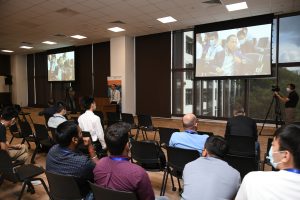

Then Prof Koen Mouthaan of ECE department at NUS, Co-Investigator of SHINE Thrust 3, whose research interests include microwave and millimetre-wave circuits and systems, phased array antennas, digital beamforming, and design and innovation, further introduced the challenges in the design of flexible phased arrays by showing simulation and measurement results of antennas using flexible substrates.

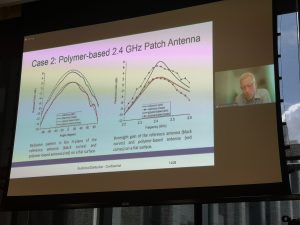
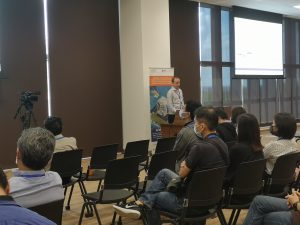
The last invited speaker was Prof Massimo Alioto of ECE department at NUS, Co-Investigator of SHINE Thrust 1, whose primary research interests include ultra-low power integrated systems, green silicon design technologies, circuits for machine intelligence, hardware security, and emerging technologies. In this talk, the challenges of heterogeneous integration were addressed through a paradigm shift that enables the design of high-mix low-volume systems, introducing an ecosystem of pre-designed silicon dice (SiBlox) and application-agnostic design methodologies. Techniques to enable design reuse to this new level are discussed along with the challenges at the presented to enable the sustainable generation of innovative and competitive silicon systems without going to the last nanometre in CMOS processes. Emphasis was given on relentless energy and cost reductions through new ecosystem-centric design techniques.
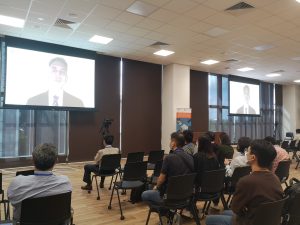
- Home
- Shine Inaugural Technical Workshop
Singapore Hybrid-Integrated Next-Generation μ-Electronics (SHINE) Centre
- Block E6, #E6-5-3, 5 Engineering Drive 1, Singapore 117608
- +65 6601 8522
- shine@nus.edu.sg

